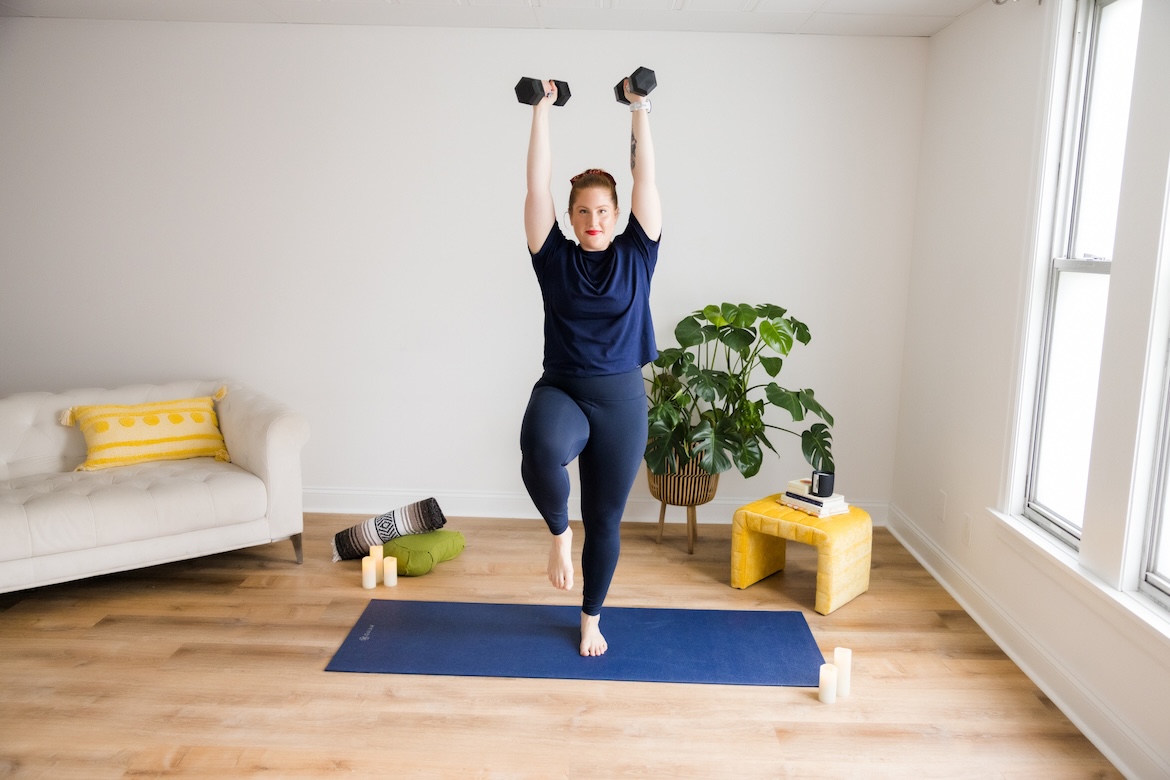When the Today Show invited certified strength and conditioning specialist Charlee Atkins, founder of Le Sweat, to come on live, national television and share a 10-minute cardio routine, they had no idea that she would give a soundbite that would wind up trending on TikTok for much longer than the brief morning segment.
But that’s exactly what happened when Atkins admitted she‘s not a fan burpees, a full-body jump-to-push-up HIIT move that trainers seem to love programming despite the audible groan they tend to elicit from exercisers. “I never include them in any of my workouts,” Atkins said at the time. “It is a recipe for injury for a lot of people.”
When I followed up with her, Atkins pointed out that this is because a burpee is actually three technical and challenging exercises combined into one very quick movement: a squat or jump squat, push-up, and plank. “If an exerciser is lacking the strength, stability, or range of motion to do any one of the exercises, then the wrong movement or placement of a limb can lead to an injury,” she says.
What makes burpees too challenging for most people to do correctly
According to Atkins, burpees take mobility in your shoulders, hips, ankles, and wrists. Being able to take these joints through pretty big ranges of motion is a pre-req to pulling them off without pain or injury.
While mobility training is becoming increasingly more popular, it’s still not mainstream enough to ensure that the average person is capable of accessing the range of motion required to perform a burpee properly. At last report, one in two Americans had some type of musculoskeletal condition, one of the most common symptoms of having a reduced joint range of motion, according to the American Academy of Orthopaedic Surgeons.
Why burpees aren’t necessary for building strength
Remember, burpees are a combination of three different exercises (squat, push-up, and plank), and Atkins says they’d only truly be functional and necessary for someone who is using these three movements regularly in their day-to-day life or in a sport they play. “Which for most, they are not,” she says. “However, burpees are mostly programmed in group fitness classes with what we categorize as the ‘gen pop,’ or general population exercisers.”
Based on all the research, she says, general population exercisers want to move more and move better, so burpees aren’t getting them closer to their bottom line. “There are far superior exercises that can be done that will develop total-body strength and stability than a burpee,” says Atkins.
What to do instead of burpees
“For starters, you can focus on the core movements of the burpee—squat, push-up, plank—and master those body weight movements,” says Atkins, who likes to teach what she calls a “deconstructed burpee.”
“I will take my clients through a five- to 10-minute circuit of squats, push-ups, planks, and some form of agility exercise like lateral bounds, single-leg hops, etc. Instead of doing a burpee for 90 seconds straight, we’ll focus on each bodyweight exercises for 30 to 45 seconds, rest, and move to the next, completing two to four rounds, depending on time.”
How to do burpees safely if you really can’t quit them
Still, burpees remain popular in group fitness classes. So what should you do if they’re given and you’re afraid of possibly injuring yourself? Modify the move to just do the core movements individually. Or, Atkins suggests, reduce the number of reps you do in a row in order to increase your chances of executing each with proper form.
“Do five or six reps, move to another exercise, go back to five to six burpees, another exercise, and repeat,” she says. “You will still get the same volume of burpees in your workout, but breaking them up into fewer reps sandwiched with other exercises, will hopefully keep the wear and tear to a minimum.”
Flash News
Empowering you to live a fit and healthy life






